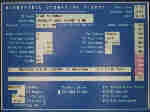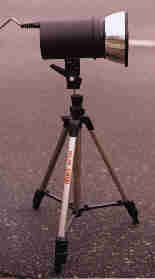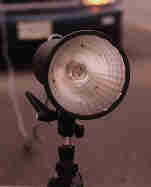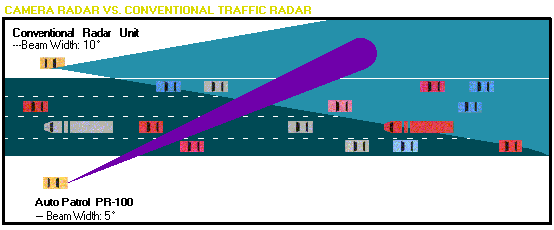Equipment and Operation
| IMPORTANT NOTICE: The information presented here is based upon best available information at time of posting. SENSE does not assume any liability pertaining to the accuracy of the information presented. Readers are advised to verify information they intend to rely upon. |
| Do the cameras work in both directions? |
Yes they do, however not all locations are taking front photos at this time. Commercial vehicles (commercial vehicles use their front licence plate as their primary plate and are frequently towing trailers) are subject to photo radar enforcement using front photos. In the past, photos of commercial vehicles were not taken or not charged. Motor Vehicle Act Regulations regarding display of front plates are here.
Under normal operation (receding mode), a vehicle would enter the radar beam some 15 to 40 feet after passing the van. By taking front photographs (approaching mode), vehicles now enter the beam 30 to 60 feet before the van (figures approximate for operation within closest two lanes). Drivers must now be significantly more proactive to avoid being photographed. At one particular site, front photographs tripled the ticketing ratio from 2.6% to 7.1%.
Under the Motor Vehicle Act, a trailer is not a motor vehicle thus the owner of the trailer cannot be charged.
| Are the cameras only used in vans? |
The equipment used in BC can be post mounted for unattended use. This type of installation will not be used in the near future because the government wants to establish a precedent of automated enforcement using a supervised system. It is believed that unattended operation might not successfully pass a court challenge at this time.There are a limited number of tripods available for setup external from the vans. While the cameras can take photographs while tripod mounted, it is not expected that this will occur frequently. Past experience with external photo radar units has resulted in frequent breakdowns due to high levels of dust and particulate matter which enter the camera systems. Vans provide a controlled environment for the cameras to operate.
It has been indicated that external setup will be used for covert surveillance for speed surveys.
| What kind of vans are used? |
The ITCU has 35 vans:
The vans are equipped with cellular phones, photo radar camera and mounting post, lap-top computer, videotape recorder, colour monitor, a large power supply/conditioner, 120 to 12-volt overnight charger, and a flash controller.
|
Typical Urban Street
Deployment (click for enlargements) |
| What regions are the vans located in? |
Based upon initial plans, it was proposed that the 30 operational vans would be deployed in the following way:
| ITCU | Approximate Boundary | Vans + Cameras |
Police Officers |
| Lower Mainland | from the border north to Powell River and Pemberton, east to Hope |
14 | 46 |
| Vancouver Island | Vancouver Island | 6 | 21 |
| Interior and Eastern BC | from southeast BC west to Hope, Lillooet, north to Williams Lake, Valemont |
8 | 28 |
| Northern BC | remaining northern region | 2 | 7 |
Here are lists of current and past advertised photo radar sites.
| What are the specifications of the photo radar units? |
| The American Traffic Systems AutoPatrol© PR-100 units used in British Columbia transmit 2.5 mW (milliwatts) of power at a frequency of 34.6 GHz +/- 10 MHz to a 5° horizontal and a 15° vertical beam width (measured at half-power). The secondary lobe attenuation is approximately 38°. The unit is designed to be aligned at a 22.5° angle to the direction of travel. Photos are taken using up to a 650 exposure canister of 35 mm Kodak Gold color film with a 150 mm medium format F4 Zeiss lens. The cameras are manual focus. Shutter speed is 1/1000 sec to 1/1600 sec. The flash duration is 1/5000 sec. to 1/500 sec. with a variable power output of 50 to 400 Ws (watt-seconds). Flashes are used in many, but not all deployments. The equipment has an advertised accuracy of +/- 1 km/h or +/- 1% over 100 km/h. However, the accuracy will vary depending upon site alignment conditions because of the 22.5° cosine correction factor applied. Consistent accuracy of the equipment under all field conditions has not been independently verified. For additional technical specifications and photographs, see the American Traffic Systems web page on the PR-100. |
Operators Screen

Power Supply
(click for enlargements) |
In-Line Flash

 |
| Do radar detectors work? |
Because the photo radar unit emits a very low power, narrow beam, across the road -- in comparison to conventional radar which emits a wider, somewhat stronger beam down the road, it is difficult (but not impossible) to obtain a reading with a radar detector early enough to take evasive action.

| Radar Band |
Frequency Standards |
Output Power |
Horizontal Beamwidth |
Signal Density (at xm on centre) |
| X-Band | 10.525 GHz +/- 0.025 |
20-240 mW (typical) |
18° (maximum) |
n/a mW/cm2 (typical) |
| K-Band | 24.150 GHz +/- 0.100 |
15-400 mW (typical) |
15° (maximum) |
n/a mW/cm2 (typical) |
| Ka-Super
wide-band |
33.400 to 36.000 GHz +/- 0.100 |
15-100 mW (typical) |
15° (maximum) |
n/a mW/cm2 (typical) |
| ATS PR-100 Photo Radar |
34.60 GHz +/- 0.01 |
2.5 mW | 5° | n/a mW/cm2 |
| What are the speed tolerances? |
Photos will be taken if the vehicle exceeds the tolerance programmed into the computer controlling the camera. This tolerance ranges from 10 km/h to 19 km/h above the posted speed limit. The tolerances of particular locations are not currently publicly advertised.The tolerance is said to be based on the 85th percentile speed if that speed falls between 10 km/h and 19 km/h over the posted speed limit. The measurement of the 85th percentile speed is done by police officers using a covert set-up of only the camera.
SENSE believes that this measurement of traffic speed should be done by traffic engineers, not police officers. The 85th percentile speed varies over a 24-hour day, a 7-day week, and seasonally, as well as during periods of congestion. There are also statistical concerns about the use of the camera to perform reliable speed surveys.
These speed surveys have been done since the start of "Speed is Killing Us" advertising and are done currently. The effect of the advertising and perceived presence of cameras may unduly influence the true speed of traffic in the downward direction thus rendering any baseline data useless.
The combination of advertising effects and of performing speed measurements at times when the 85th percentile speed is low help the government meet their "fairness guidelines" while increasing the percentage of violators.
The government has announced that tolerances will be reviewed and changed as traffic speed change. The statistical result of this will be to lower all tolerances to 10 km/h. Drivers might find that they start getting tickets in the mail even though they have been driving at the same reasonable speed for years in the particular location.
Furthermore, if speed limits are set correctly, why don't they use one tolerance?
The government has also stated that "tolerance levels will be tightened when weather conditions and visibility are poor" (advertisements The Vancouver Sun: March 30, 1996, and March 8, 1996, and others). And "in some weather conditions there will be zero tolerances in effect." (Traffic Safety Initiative Quick Reference Guide, November 1996). However, SENSE is informed that police officers in the vans do not have the ability to change the tolerances while in the field.
| "I passed a photo radar van, saw a flash, yet never received a ticket -- why?" |
For the first months of the program, only about 30% of all photos taken were ever turned into actual tickets. SENSE is informed that currently about 60% become tickets. There are numerous reasons why a photo might be discarded, including:
- Poor exposure caused by lighting, sun, glare, etc.
- Licence plate unreadable due to foreign object, dirt or mud, water or mist.
- Multiple vehicles travelling in same direction.
- Deployment was a training or testing session.
- Operator error, which includes: incorrect set-up or programming, out-of-focus, etc.
- Trailer plates, some out-of-province plates, etc.
- Back-end processing capability exceeded.
| How are the tickets processed? |
The tickets are processed at the Integrated Traffic Camera Unit in Richmond by Attorney General and ICBC staff and enforcement officers (not police officers) who have powers to charge tickets. You can see some of the software used on the American Traffic Systems' website.
| Do licence plate covers work? |
There is detailed information on licence plate covers on thepage.
| Rev: 1999.08.01 |